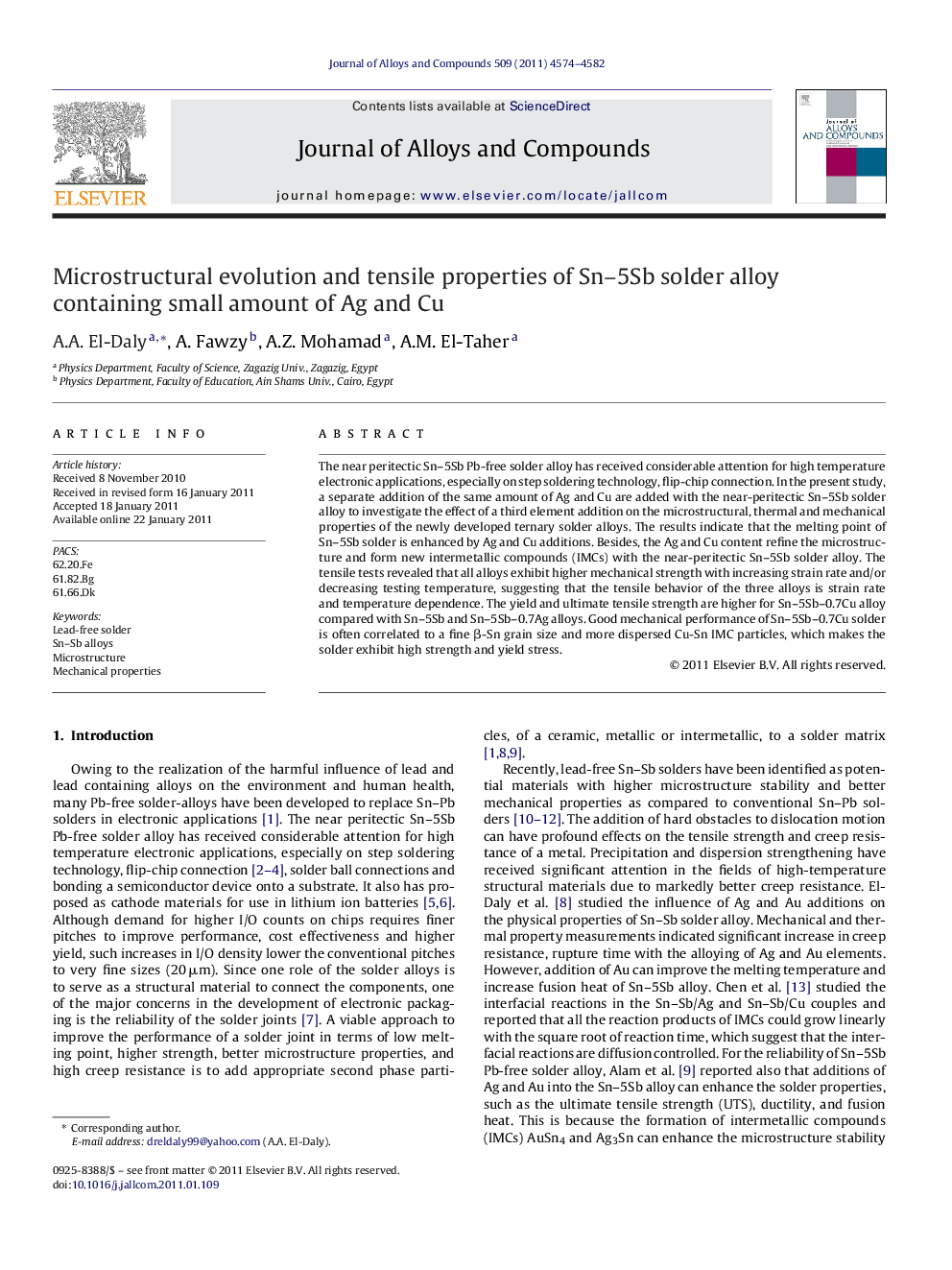| Article ID | Journal | Published Year | Pages | File Type |
|---|---|---|---|---|
| 1618118 | Journal of Alloys and Compounds | 2011 | 9 Pages |
The near peritectic Sn–5Sb Pb-free solder alloy has received considerable attention for high temperature electronic applications, especially on step soldering technology, flip-chip connection. In the present study, a separate addition of the same amount of Ag and Cu are added with the near-peritectic Sn–5Sb solder alloy to investigate the effect of a third element addition on the microstructural, thermal and mechanical properties of the newly developed ternary solder alloys. The results indicate that the melting point of Sn–5Sb solder is enhanced by Ag and Cu additions. Besides, the Ag and Cu content refine the microstructure and form new intermetallic compounds (IMCs) with the near-peritectic Sn–5Sb solder alloy. The tensile tests revealed that all alloys exhibit higher mechanical strength with increasing strain rate and/or decreasing testing temperature, suggesting that the tensile behavior of the three alloys is strain rate and temperature dependence. The yield and ultimate tensile strength are higher for Sn–5Sb–0.7Cu alloy compared with Sn–5Sb and Sn–5Sb–0.7Ag alloys. Good mechanical performance of Sn–5Sb–0.7Cu solder is often correlated to a fine β-Sn grain size and more dispersed Cu-Sn IMC particles, which makes the solder exhibit high strength and yield stress.
Research highlights▶ We examine the effects of minor additives of Ag and Cu on the as-cast microstructure and mechanical properties of the Sn–5Sb solder alloy. ▶ The Sn–5Sb–0.7Cu alloy displayed superior mechanical performance over the other two solders in terms of much higher measured strength and ductility. ▶ The presence of fine β-Sn grain size and distribution of fine needle-like Cu–Sn IMC phases in the Sn–5Sb–0.7Cu solder matrix were the main source of the strengthening mechanism.
